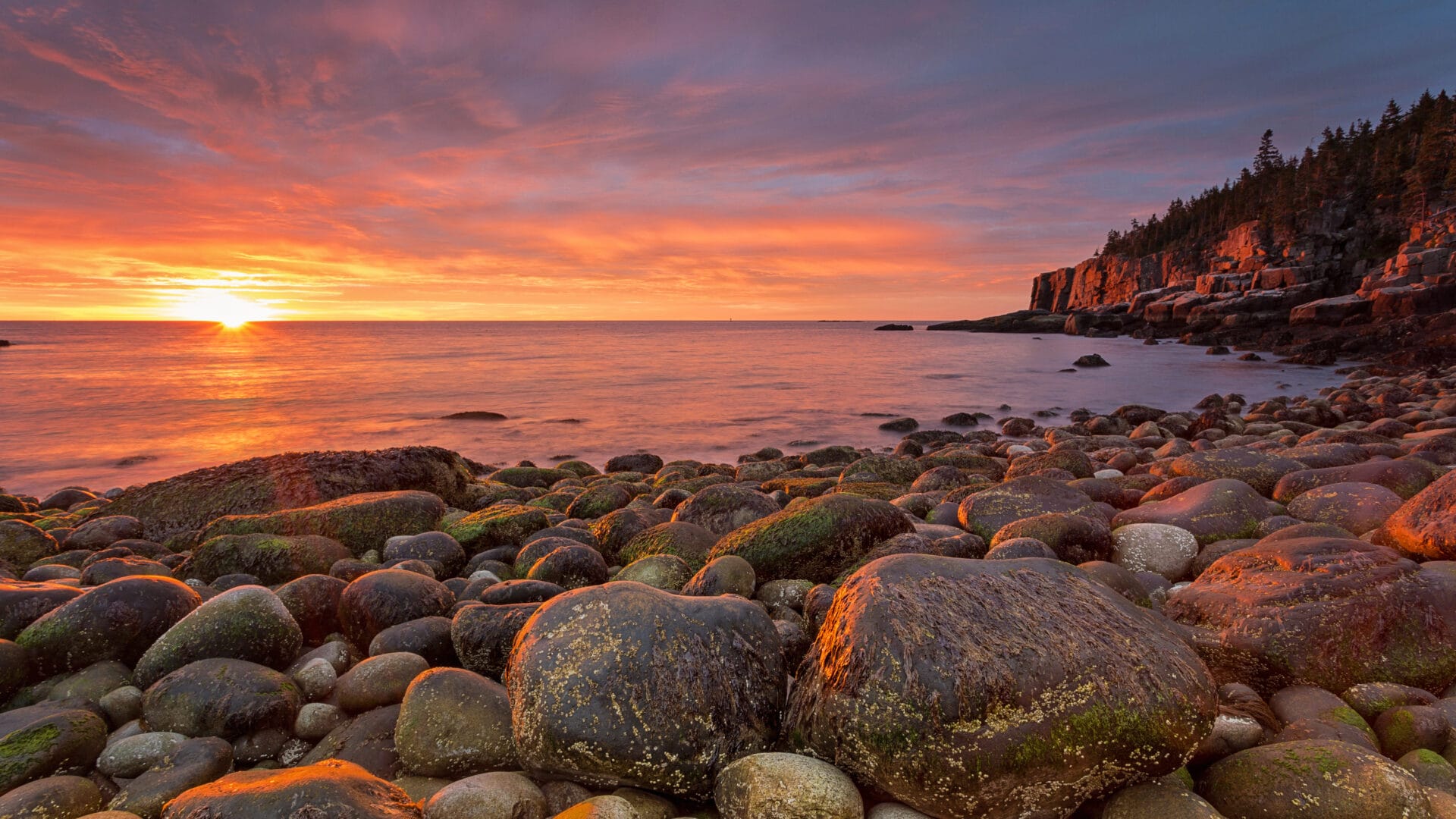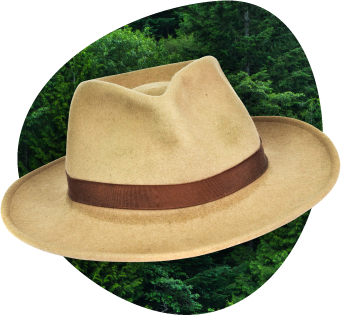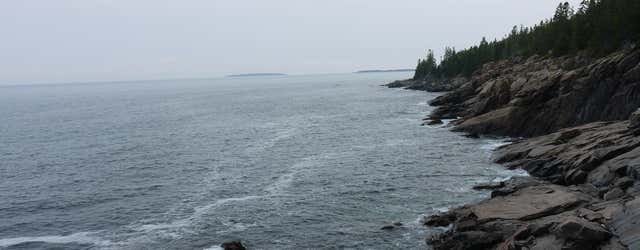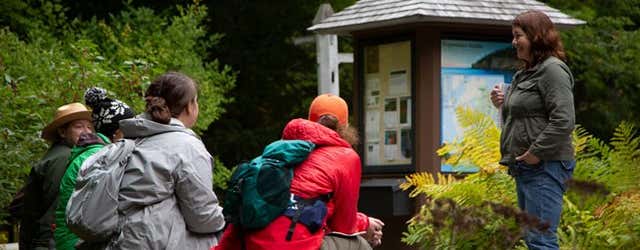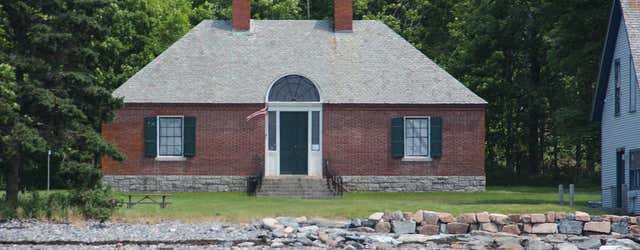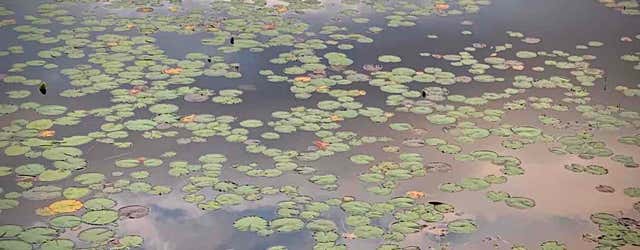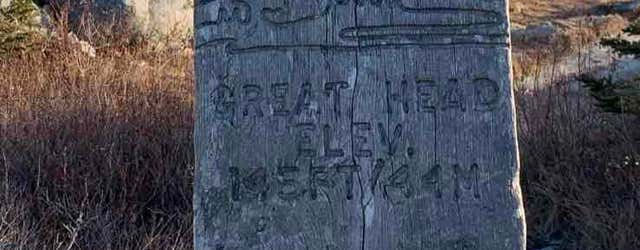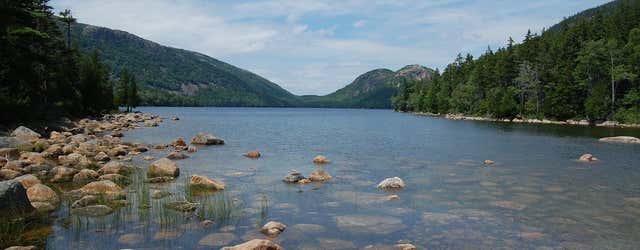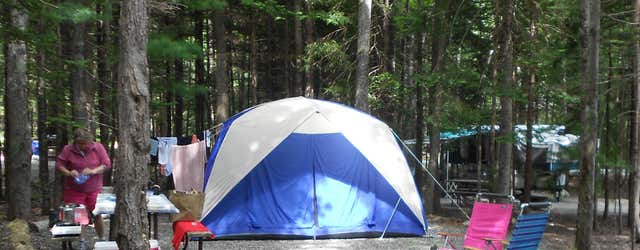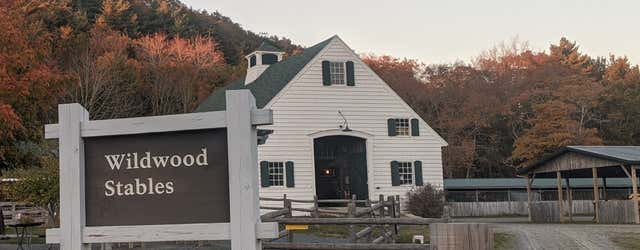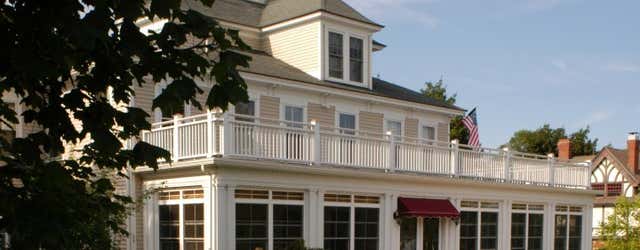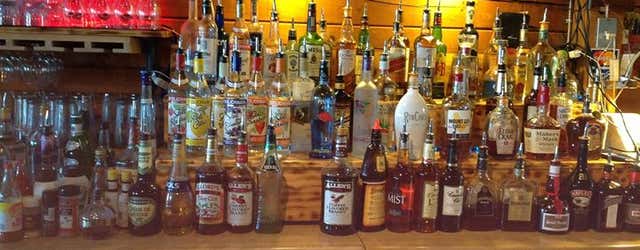The only national park in New England, Acadia helped birth the U.S. conservation movement in the 19th century and is the oldest national park east of the Mississippi. The 47,000 acres on coastal Maine that comprise the park are part of the ancestral homeland of the Wabanaki Confederacy, known as the People of the Dawnland. Cadillac Mountain—the 1,529-foot peak that dominates Acadia—is considered the best spot on the East Coast to greet the sunrise. Crisscrossed by charming carriage roads, Acadia draws millions of visitors each year with its extensive hiking and biking trails, 27-mile scenic drive, rugged beaches, and rich history.

Written for you by park rangers
Who knows a national park best? Yep, the rangers who live and breathe its fresh, clean air every day. That’s who we turned to for help in creating this guide. Roadtrippers has partnered with the Association of National Park Rangers and convinced its rangers to spill their secrets for your benefit.
Planning a trip to Acadia National Park
How to get to and around Acadia National Park
Acadia National Park more or less surrounds the town of Bar Harbor, Maine, occupying most of Mount Desert Island, a number of surrounding islands, and a separate swath of the nearby Schoodic Peninsula. The park is located approximately 280 miles from Boston and 46 miles from Bangor International Airport, the nearest major airport.
Getting to Acadia by car: To get to the main park entrance on Mount Desert Island from points south (as most travelers do), take I-95 north from Boston to Augusta, Maine, then State Route 3 east to Ellsworth (it runs concurrent with U.S. Route 1 between Belfast and Ellsworth), continuing on to Mount Desert Island. For an alternative (and more scenic) drive, you can take I-95 to Bangor, then take U.S. Route 1A east along the coast to Ellsworth, then State Route 3 to Mount Desert Island. U.S. Route 1, which connects with Route 1A in Ellsworth, provides the most direct access to the Schoodic Peninsula, which is about 25 miles north of Mount Desert Island and reached via State Route 186.
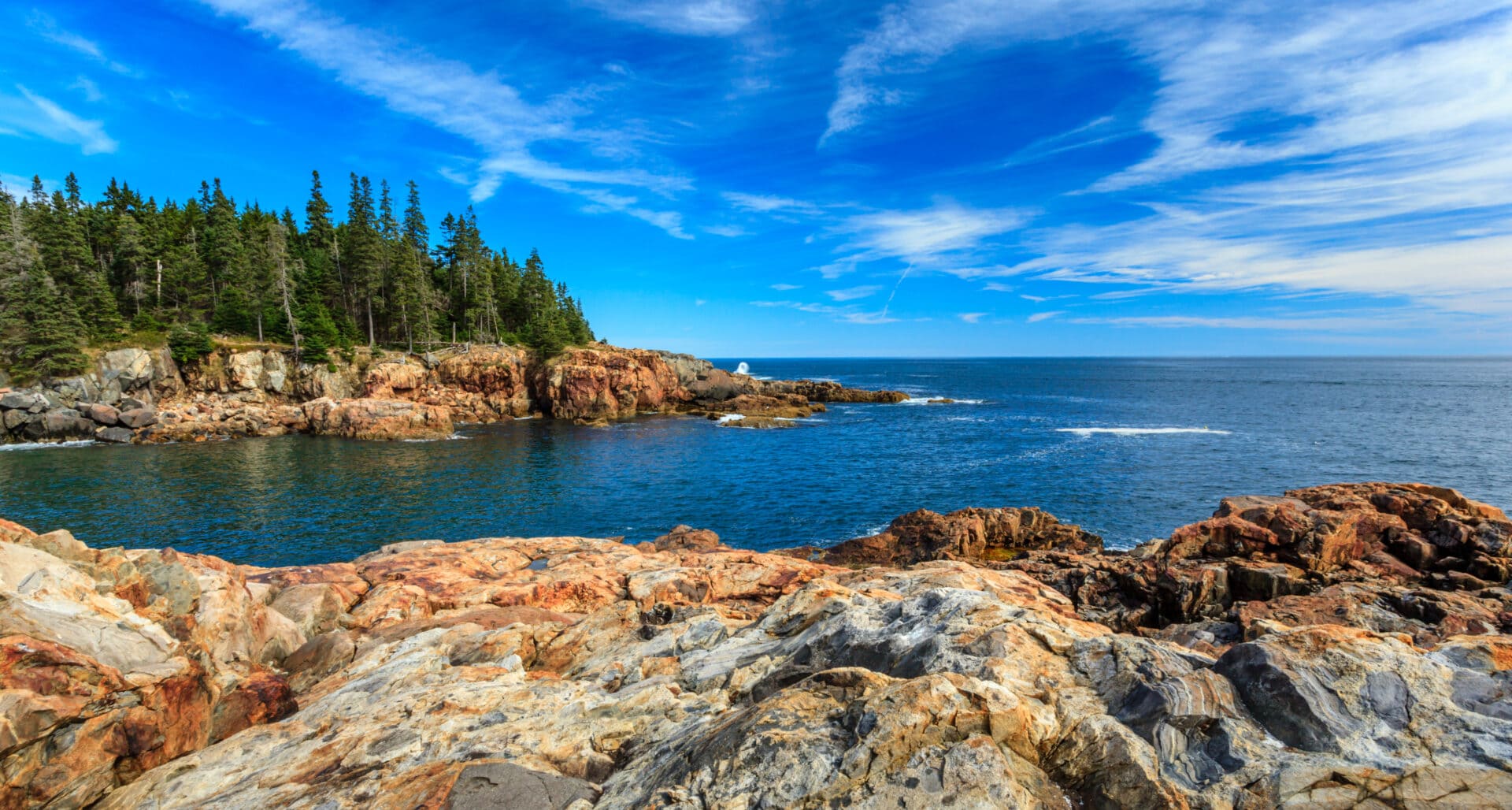
Getting to Acadia by air: Boston Logan International Airport is the closest regional gateway to the park, offering connecting flights to Hancock County-Bar Harbor Airport, which is about 10 miles from Acadia. The drive from Logan to the park is a minimum of 4.5 hours. Major airlines also serve Bangor International Airport, which is about an hour away from the park. Car rentals are available at both airports.
Getting around the park: The Park Loop Road and the rest of Acadia is accessed via state roads. The free Island Explorer bus runs late June through mid-October and is a great way to get around: Buses operate on multiple routes and connect park attractions with campgrounds, hotels, restaurants on Mount Desert Island, and the Schoodic Peninsula. A private ferry also links Bar Harbor to Winter Harbor on the Schoodic Peninsula, and the Island Explorer stops at both ferry piers.
The easiest place to fly into is Hancock County-Bar Harbor Airport, which has two airlines (JetBlue and Cape Air) servicing it in summer.
When’s the best time to visit Acadia National Park?
Acadia is a four-season destination, and in Maine that means some serious variations in weather conditions and temperatures depending on when you decide to visit. In summer, expect daily highs of 78 to 80 degrees and lows in the 50s. In winter, coastal temperatures dip to highs in the 30s and average lows in the teens. Spring and fall temperatures fall somewhere in between. Summer is the driest time of year, with an average of 6 to 7 rainy days per month in July and August; that rises to 10 days in December and January, and remember—at that time of year the moisture may fall as snow, not rain.
A lot of winter visitors expect to see Acadia covered in snow, but that isn’t guaranteed in coastal Maine. Especially in recent years, it’s just as likely to rain as snow in the park, so check the weather forecast before you go.
Summer: Summer, particularly late June to late August, is the busiest time of year at Acadia; if you’re looking for beach weather, this is the season to visit (though many visitors might only dip a toe in the still-chilly Atlantic waters).
Fall: The explosion of color in Maine during the fall foliage season makes this a beautiful time to hike Acadia’s trails and take in the views of woods and water from Cadillac Mountain and other high points in the park. Leaf peepers will find fall colors peaking typically in mid-October, and since many fall visitors come to Acadia on cruise ships, restaurants and hotels tend to be less crowded at this time of year, even if the park remains busy. Late fall can be damp and chilly in Acadia, but you can also get some crisp, clear days in the park if you don’t mind the chilly nights.
Winter: Winter can be beautiful in Acadia, when access to the Ocean Drive portion of Park Loop Road remains open and—if there’s been a recent snowfall—the carriage roads are available for cross-country skiing and snowshoeing. Ice and snow can make the park’s hiking trails treacherous, however.
Spring: Late spring (late May to late June) daytime temperatures reach into the 60s and 70s, and you’ll find smaller crowds prior to Memorial Day. Best of all, the mosquitoes haven’t come out yet (although Maine’s notorious black flies can be a bother in June).
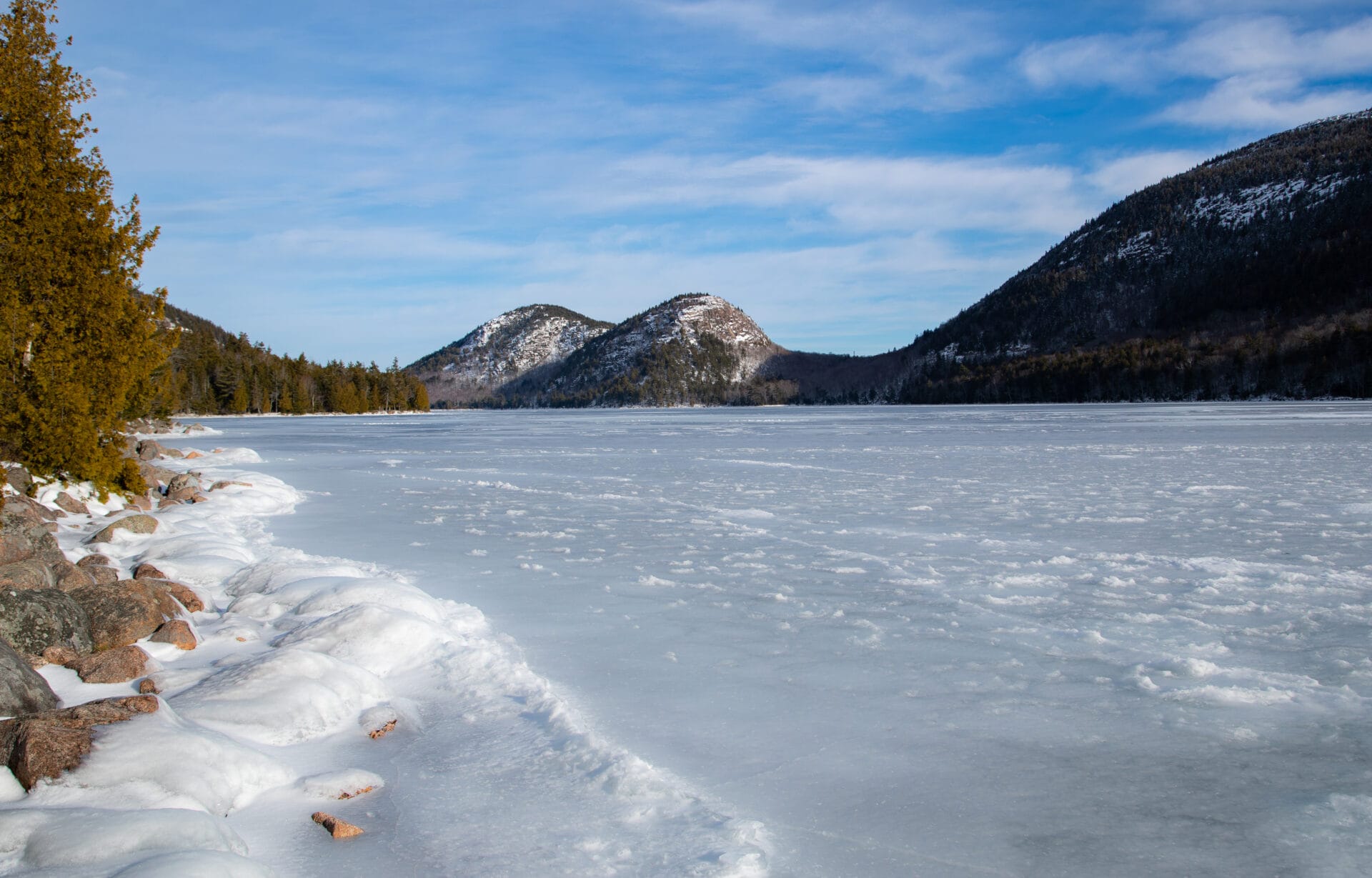
What to do at Acadia National Park?
A visit to Acadia National Park can be as sedate as a drive on Park Loop Road and afternoon tea at the Jordan Pond House, or as intense as primitive camping and hiking some of the most challenging trails in coastal New England.
Visitor Center Information
Hulls Cove Visitor Center: The park’s main visitor center is open mid-April through October. Located at the north end of the park, it’s staffed by park rangers, sells park passes, and has maps and interactive exhibits, as well as the Acadia National Park Store. (During the winter, the rangers relocate to the Bar Harbor Chamber of Commerce office downtown.)
Thompson Island Information Center: This small visitor center near the park’s entrance from the mainland is seasonally staffed by rangers and representatives from local chambers of commerce. Park passes are sold here.
Sieur de Monts Nature Center: In addition to serving as a visitor center with maps and information, this nature center offers exhibits and programs highlighting Acadia’s biology, history, and preservation efforts. Open May through October.
Islesford History Museum: This park-operated museum on Little Cranberry Island has exhibits on island life, ranger talks, and a gift shop.
The park is open 24 hours a day, and on clear nights visitors can enjoy the dark skies to view the stars and Milky Way from many locations.
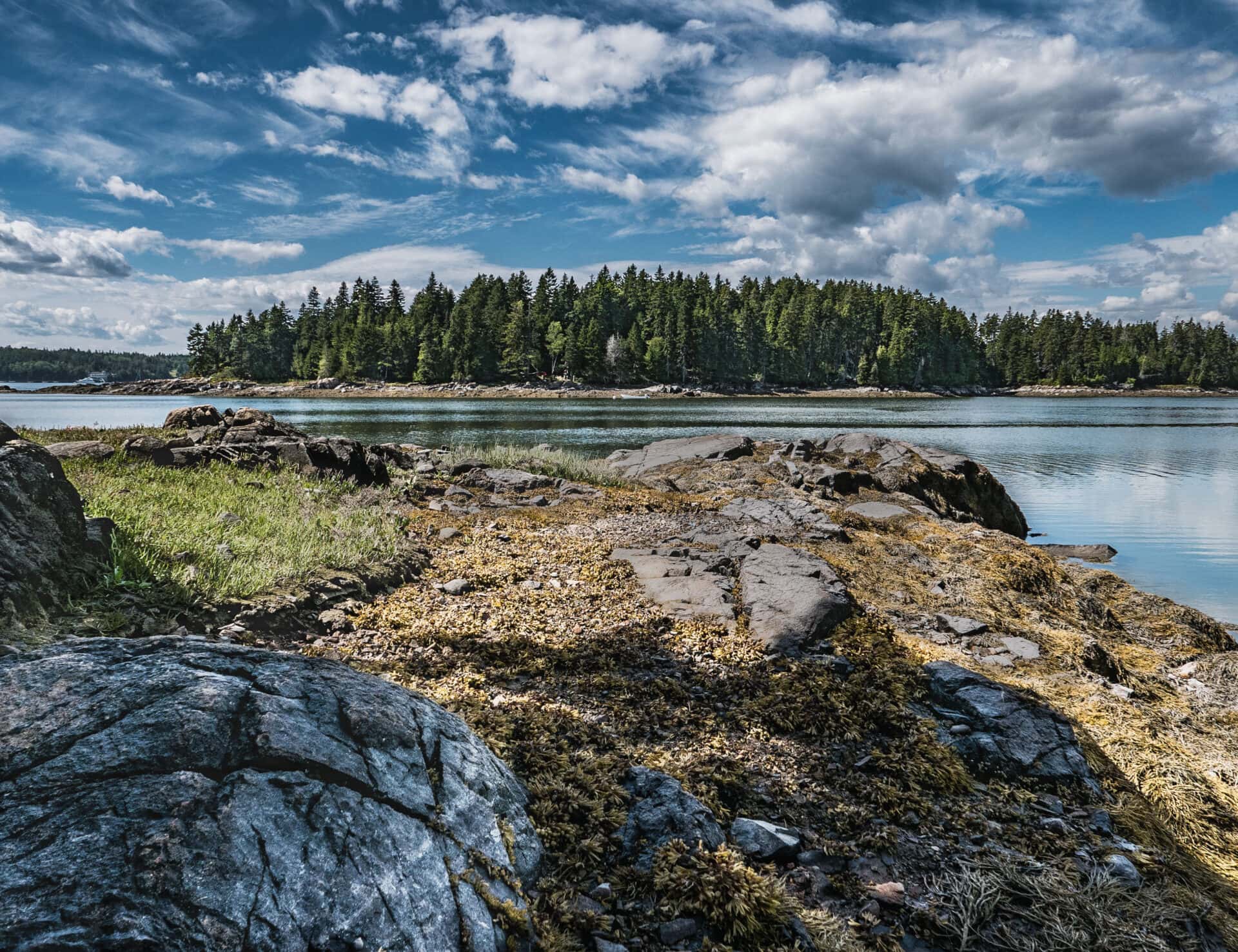
Regions of the Park
Acadia National Park is largely, but not entirely, situated on Mount Desert Island, often referred to as “MDI.” The MDI section of the park can be divided into east and west halves. Other major park units are found on the Schoodic Peninsula, accessible via ferry or an hour and a half drive by car from Bar Harbor; and on Isle au Haut, which takes an hour and a half drive plus an hourlong ferry ride to reach.
East Mount Desert Island: The busiest part of the park includes Park Loop Road, Cadillac Mountain, Jordan Pond, Ocean Drive, and Sieur de Monts. It’s also closest to the town of Bar Harbor.
West Mount Desert Island: The quiet side of Acadia’s MDI section is located across Somes Sound from Bar Harbor and has many uncrowded hiking trails—in part because of their relative isolation, but also because they tend to be rated moderate to strenuous and not for beginners.
Schoodic Peninsula: The most recently designated portion of the park is a quiet corner with bike paths and hiking trails traveling though less rugged terrain than that found on Mount Desert Island.
Isle au Haut: This isolated portion of Acadia is reachable only by ferry; 60 percent of the island is part of the park, and it’s threaded with peaceful hiking trails through woods and along the shoreline.
Top Activities
Carriage roads: The 45 miles of 16-foot-wide carriage roads built by philanthropist John D. Rockefeller Jr. are sometimes still used for their original purpose—travel by horse and carriage—but more commonly by walkers, hikers, and bikers. The stone bridges and gate lodges of the old road network are nearly as beautiful as the scenic views of rolling forests, waterfalls, cliffs, bays, and the ocean along the way.
Jordan Pond: Jordan Pond, a 150-foot-deep glacial tarn surrounded by low hills, was a photographer’s dream generations before smartphones and selfies. Visitors can kayak or canoe—but not swim in—the clear waters of the pond, as well as hike the area’s trails (some of which overlook the pond), dine at Jordan Pond House restaurant, visit the gift shop, or just relax and drink in the views.
Park Loop Road: This 27-mile, one-way scenic drive loops around the eastern half of Acadia on Mount Desert Island, and with a 35-mph speed limit you could theoretically complete the circle in an hour and return to Hulls Cove Visitor Center. But that’s not the point. Instead, take the time to stop at the scenic overlooks, make the detours to the Cadillac Mountain summit, Sand Beach, and Thunder Hole, and witness the heart of Acadia at Sieur de Monts.
Cadillac Mountain: The highest point in the park has 360-degree views from the summit, making it extremely popular for both sunrise and sunset viewing. So popular, in fact, that the summit road is sometimes closed due to overcrowding—which prompted the National Park Service in 2021 to implement a vehicle reservation program for the Cadillac Mountain drive between May 26 and October 1. Alternatively, leave the car behind and hike to the top.
Top Activities
Sand Beach: A sandy beach is rare along the rocky coastline of Mount Desert Island, making Sand Beach a popular place to get some sun or take a plunge in the cold Atlantic waters. Parking can be hard to get after 10 a.m. in the summer, so arrive early.
Thunder Hole: The incoming tide roars into this dramatic rocky chasm on the east coast of Mount Desert Island, most loudly about 2 hours before high tide when there’s a swell from the southeast.
Bass Harbor Head Lighthouse: One of the main attractions on the west side of Mount Desert Island, this 33-foot lighthouse, originally raised in 1858, guards the mouth of Bass Harbor. A short hiking trail leads to nearby sea cliffs, but access to the lighthouse itself is prohibited.
Wild Gardens of Acadia: These gardens at Sieur de Monts, maintained by local volunteers, are a great first stop before a hike because they include more than 300 species of native plants and flowers, all labeled so you can identify them when you see them again along the trails.
Driving information
Driving is prohibited on the park’s carriage roads but welcomed on Park Loop Road, which circles the east side of Acadia on Mount Desert Island and provides vehicle access to many of the park’s most popular attractions. Park Loop Road connects to Otter Creek Road (State Route 3) near Bar Harbor as well as by Day Mountain.
When you exit the eastern half of Acadia’s Mount Desert Island unit, Route 3 can be used to visit the western half. Spurs off Park Loop Road lead to the summit of Cadillac Mountain, Sand Beach, and other attractions. Eagle Lake Road exits Bar Harbor and bisects the east MDI portion of the park, offering another way to reach the western half of Acadia.
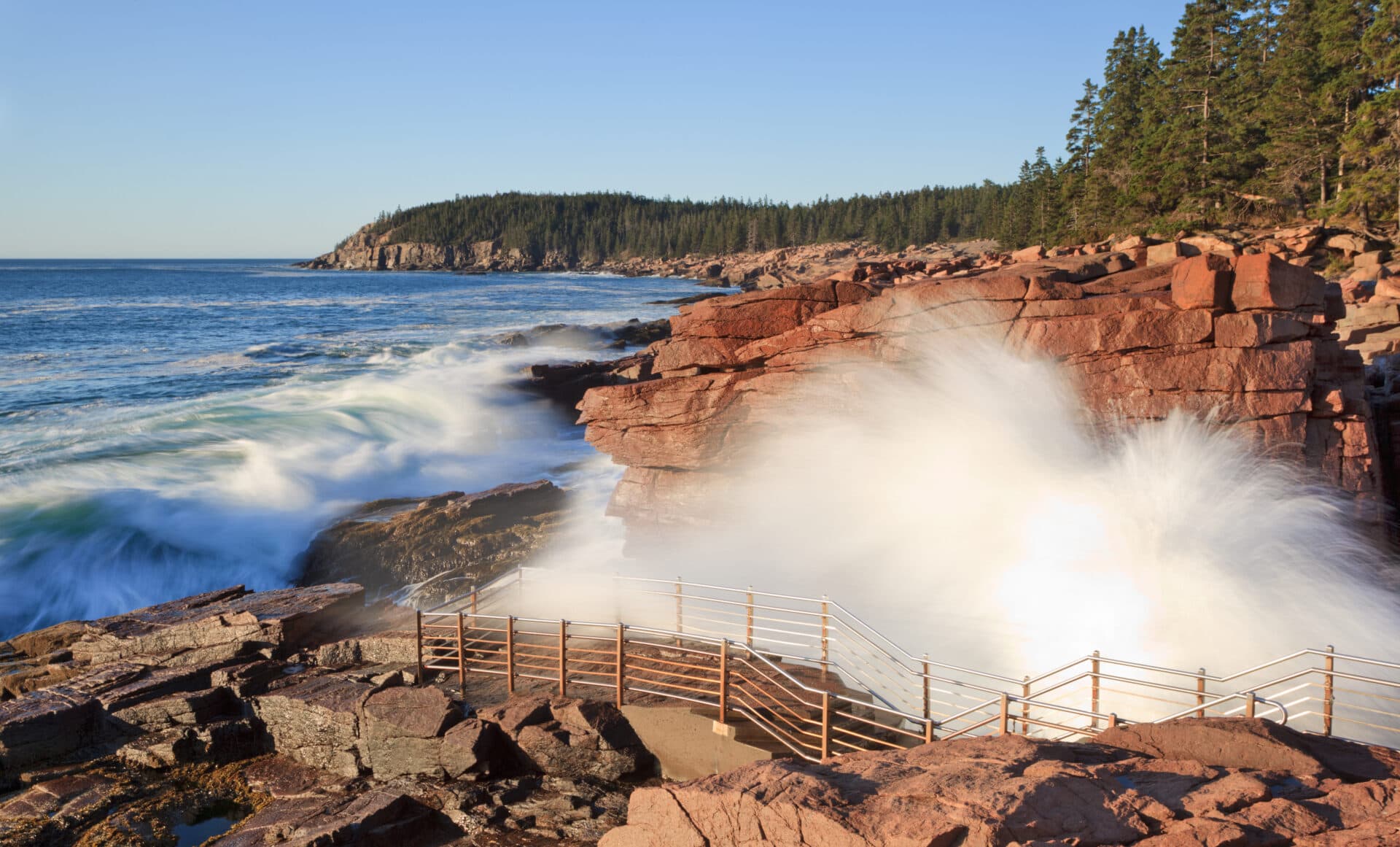
The Islands of Acadia
Mount Desert Island is the main island home of Acadia National Park, but it’s hardly the only one. Some of the other islands protected as part of the park are:
- Isle au Haut: The most remote part of Acadia National Park, “High Island” lies off the coast of Stonington, Maine, and can be reached only by ferry. Visitors can stay overnight at Duck Harbor Campground.
- Baker Island: One of the five Cranberry Islands and home to Baker Island Light Station, which guards the mouth of Frenchman Bay.
- Bald Porcupine Island: The southernmost of the five Porcupine Islands is just off the coast of Bar Harbor.
- Sheep Porcupine Island: It’s not sheep or porcupines but rather nesting seabirds (and American bald eagles) that keep visitors banned from this island from mid-February through August each year.
- Long Porcupine Island: This well-forested 130-acre island is known for its 100-foot granite sea cliffs. Like Sheep Porcupine, it’s closed to visitors mid-February through August to protect nesting birds.
- Bar Island: Visitors can walk to Bar Island at low tide via a natural gravel land bridge to access wooded hiking trails. Just be sure to head back to the mainland before the tide comes in.
- Little Moose Island: Another Acadia island accessible via a tide-dependent land bridge, Little Moose Island is off the tip of the Schoodic Peninsula.
- Pond Island: A small island off the coast of the Schoodic Peninsula, Pond Island sits in the center of West Pond Cove.
- Schoodic Island: Jointly managed by the National Park Service and The Nature Conservancy in Maine, 67-acre Schoodic Island is another seabird nesting site and thus closed to visitors during nesting season.
- Western Ear Island: A small island at the southern end of Isle au Haut.
- Bear Island: Located in Somes Sound, Bear Island is known for its 31-foot brick lighthouse, built in 1899.
- Thompson Island: Nearly all visitors to Acadia traverse Thompson Island, although they may not even realize it. This small island is the stepping stone for the road between the mainland and Mount Desert Island. It even has its own visitor center.
Islesford Historical Museum on Little Cranberry Island is also part of the park, but the rest of the island is not.
Hiking in Acadia National Park
Acadia has more than 140 miles of hiking trails, from beginner-friendly strolls along former carriage roads to perilous, cliff-hugging ascents. Visitors will enjoy great views from nearly any trail in the park, but the big, sweeping ocean and mountain vistas can be enjoyed during hikes on the eastern side of Mount Desert Island.
Easy Hikes
Ship Harbor Nature Trail: A relaxed 1.3-mile loop trail along the west side of Ship Harbor.
Bar Island Trail: This trail consists of a half-mile walk across a gravel bar exposed at low tide followed by a modest half-mile ascent to the top of Bar Island.
Shore Trail: Not officially part of the park, this mostly flat and entirely beautiful seaside stroll begins at Bar Harbor’s town pier and runs along the eastern shore of Mount Desert Island.
Moderate Hikes
Great Head Trail: Close to Sand Beach, this 1.4-mile loop is a short hike with some great sea views from open ledges.
Bubbles Trail: A 1.5-mile round trip with a few steep, rocky sections that allows you to summit three of the park’s high points: North Bubble, South Bubble, and Bubble Rock.
Jordan Pond Path: A 3.5-mile loop trail around the shoreline of Jordan Pond.
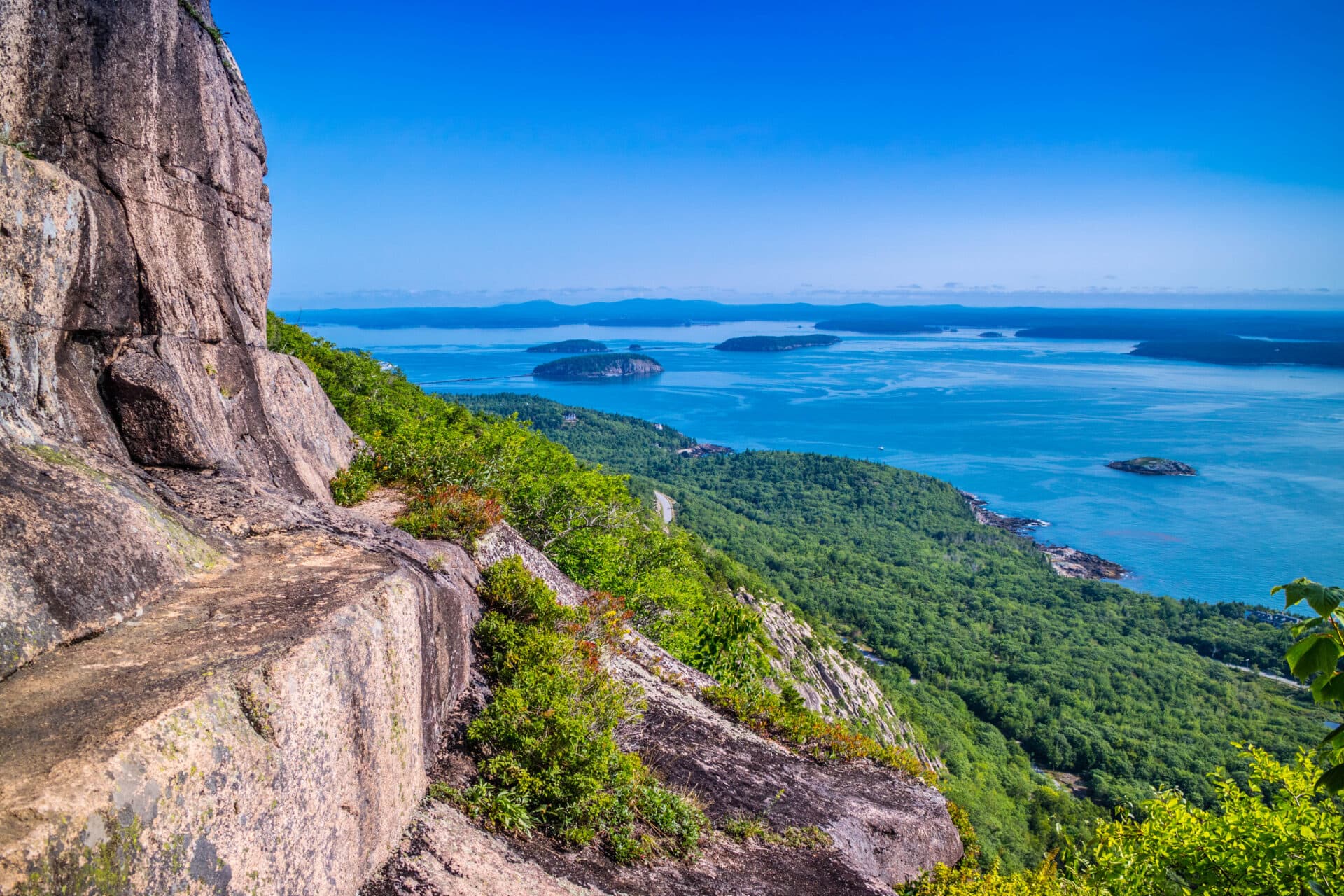
Strenuous Hikes
Jordan Cliffs Loop: Steep slopes and a strenuous climb up Sargent Mountain make this a challenging 5-mile, 3-to-4-hour hike.
Precipice Trail: The 3.2-mile Precipice Trail is less a hike than a climb up the steep side of Champlain Mountain, featuring traverses over open cliff faces and strenuous ascents aided somewhat by a series of iron rungs and ladders.
Accessible Hikes: All 45 miles of Acadia’s paved carriage roads are wheelchair accessible and permit the use of motorized wheelchairs. The Jesup Trail in the Sieur de Monts Spring Area passes through a forest of white birch on a boardwalk wide enough for wheelchairs (with shoulder and turnaround areas, too). The nature trails in the Jordan Pond and Ship Harbor areas are also accessible.
Get a map. The trails of Acadia are a network of interconnected segments, and the intersections are many and confusing, even to people who know them well.
Where to stay in and around Acadia National Park?
Whether you plan to rough it or end your day of hiking or biking with some much-deserved pampering, you’ll find plenty of lodging options in and around Acadia National Park, from campgrounds and yurts to motels, rental properties, and luxury hotels and bed-and-breakfasts.
Campgrounds
Blackwoods Campground: Located on Park Loop Road on the east side of Mount Desert Island, this wooded campground has both tent and RV sites, with flush toilets, running water, and a dump station, but no electrical hookups.
Seawall Campground: As the name suggests, this campground on the west side of Mount Desert Island is close to the ocean; it has tent and RV sites, water, flush toilets, fire rings, and a dump station, but no electrical hookups.
Schoodic Woods Campground: The only in-park campground on the Schoodic Peninsula has a wide variety of campsites, including both drive-up tented sites and hike-in rustic tent sites, and RV sites with electrical hookups and/or water hookups.
Duck Harbor Campground: This campsite on remote Isle au Haut is perfect for visitors looking for a rustic Acadia stay off the beaten path, but it has only five campsites and they book up fast.
Booking for all campgrounds within Acadia National Park begins April 1 and can be done on recreation.gov.
Wildwood Stables, near Jordan Pond House, offers tent camping but only to visitors with horses.
Acadia East Campground on the Schoodic Peninsula is a private, backcountry-style, self-serve tent campground with five sites near the Schoodic unit of Acadia National Park.
Hotels and Motels
West Street Hotel: Enjoy a lobster dinner, a rooftop pool, spa offerings, and luxury water-view rooms and suites in downtown Bar Harbor.
The Claremont Hotel: On Mount Desert Island but removed from the bustle of downtown, this historic boutique hotel has amazing views of Somes Sound and Cadillac Mountain.
Bed & Breakfasts
The Elmhurst Inn: An upscale B&B that serves a multicourse breakfast of fruit, breads, quiche, waffles, and more. The inn has a dozen rooms in the main house and carriage house.
Bass Cottage Inn: The guest rooms are named for local herbs, and the locally inspired breakfast has ingredients sourced from Maine farms and producers.
The best way to stay near Acadia is in one of the vast number of cottages in and around Mount Desert Island, rather than Ellsworth or even Bangor, in order to avoid a lot of driving on and off the island.
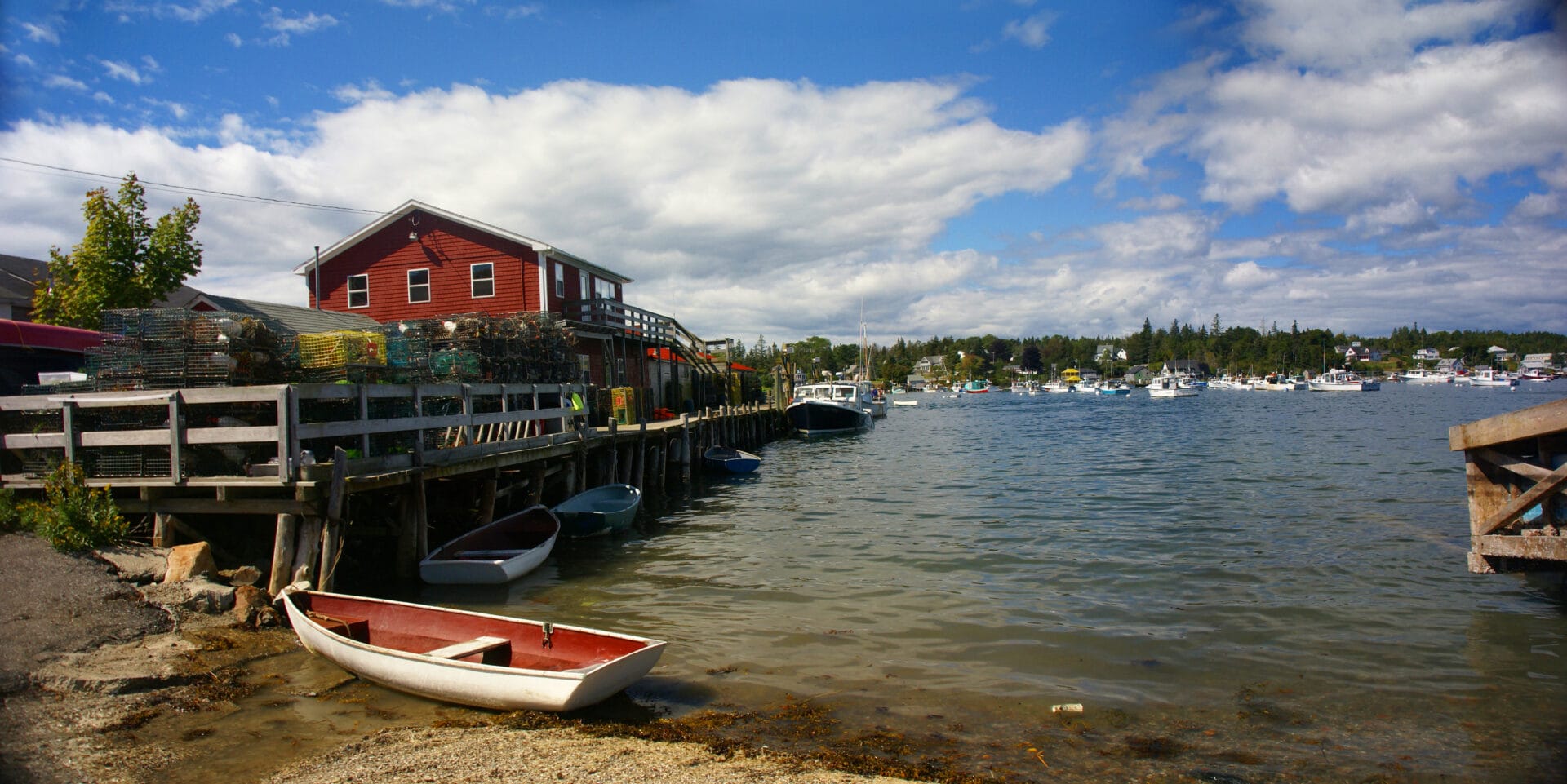
Where to eat in and around Acadia National Park?
With the exception of Isle au Haut (which has a seasonal food truck but not much else), there are many dining choices in and around Acadia, on Mount Desert Island as well as the Schoodic Peninsula.
Jordan Pond House is the only restaurant located within the park. Open May through October, the restaurant sits on a hill overlooking the pond and serves lunch, afternoon tea, and dinner, including the famous popovers that founder Nellie McIntire first began offering to hungry park visitors in 1893.
An Argentine-style parrilla steak grill isn’t necessarily what you’d expect in Bar Harbor, but that’s what Havana delivers, along with Latin American tapas and full entrées like paella. Panoramic harbor views come with your meal at Reading Room, the restaurant at the historic Bar Harbor Inn. C-Ray Lobster, Rose Eden Lobster, and Stewman’s Lobster Pound are go-tos for Maine’s tastiest crustaceans, while Bar Harbor boasts two great places to sample the local suds: Atlantic Brewing Company, which produces its own ales, porters, and IPAs, and Bar Harbor Beer Works, pouring a wide selection of Maine beers on draft.
The French aren’t the only ones who eat snails, as you’ll learn at The Pickled Wrinkle, a Schoodic Peninsula restaurant named for an old Maine delicacy—pickled sea snails (aka whelks). You’ll find them on the menu along with more conventional fare like pizza, wings, and burgers. The Winter Harbor Lobster Shack is the place to go in Schoodic for a lobster roll.
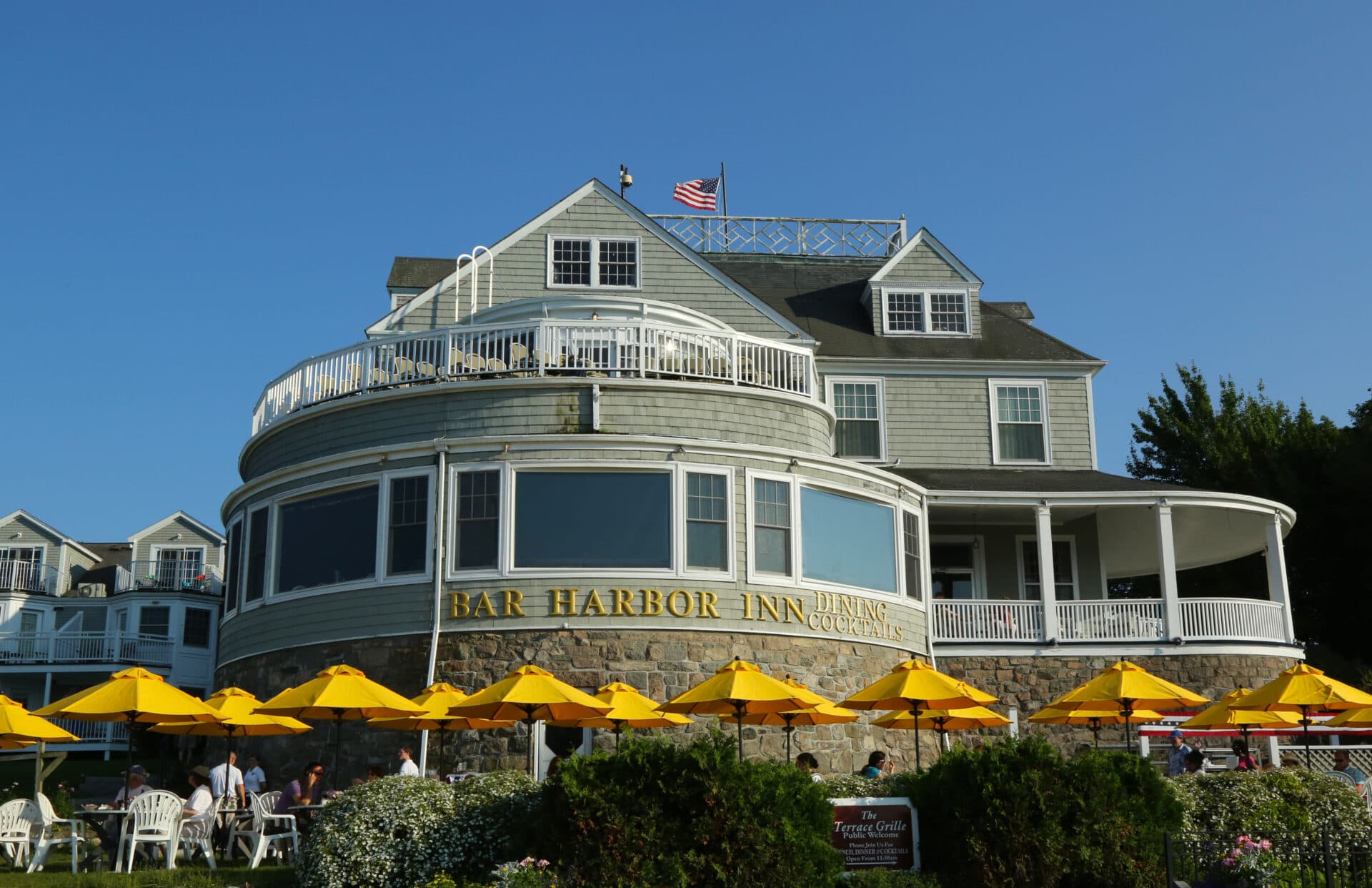
There are several lobster pounds, and simple lobster restaurants, near Acadia National Park. They give a good taste of the coast of Maine, and some are located right on the water.
How many days should you plan to spend in Acadia National Park?
Visitors can easily spend 3 days exploring Acadia and Bar Harbor, but if you have only a single day, drive the 27-mile Park Loop Road and make some of the popular stops along the east side of Mount Desert Island. The road will take you to some of the top sites in the park, including Jordan Pond; Cadillac Mountain; the gardens, museum, and nature center at Sieur de Monts; and coastal attractions like Sand Beach, Thunder Hole, and Otter Cliffs.
Longer stays allow for more extensive exploration of Acadia’s network of hiking trails, guided kayaking tours of offshore waters and islands, and road trips to the Schoodic Peninsula and Isle au Haut. You’ll also have plenty of time to walk, bike, or ride horseback on the park’s historic carriage roads, try your hand at fishing, go bird-watching, shop in Bar Harbor, and of course, wake up early to view a magnificent sunrise atop Cadillac Mountain.
For hikers, there’s at least a week’s worth of goodness in Acadia—and if you have a bike or a kayak, then you’ll definitely need more than a week. The park alone has plenty to keep people busy, and with the addition of museums and shops in Bar Harbor and around the island, the options are many and varied.
